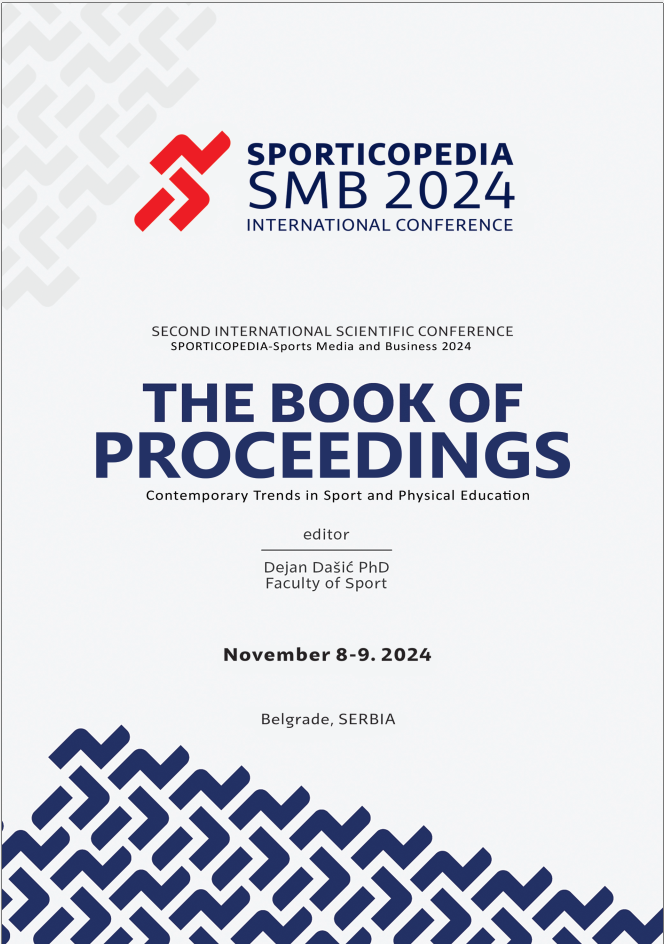Abstract
This study aims to investigate the usability of isotonic dynamometry in children and youth by determining the correlation between isometric dynamometry, which is considered the most valid direct-laboratory method for the assessment of muscle contractile properties in children, and isotonic dynamometry. The sample of the participants was composed of children and youth aged 7 to 19 years divided into 3 groups: younger school age (7-10 y), middle school age (11-14 y) and high school age (15-19 y). Implemented tests were the hand grip strength test (isometric dynamometry) and countermovement jump on the force plates (isotonic dynamometry). The results of Pearson’s correlation coefficient revealed that there is no significant correlation between Fmax, RFD and jump height in younger (r = 0.176, p = 0.291; r = 0.152, p = 0.363, respectively) and middle school-age children (r = 0.059, p = 0.733; r = 0.201, p = 0.241, respectively) while there is a high correlation in the group of high school participants (r = 0.531, p = 0.001; r = 0.544, p = 0.001, respectively). This study’s results indicate that the isotonic dynamometry method is not valid for implementation in the group of children under the age of 15.
References
Abernethy, P., Wilson, G., & Logan, P. (1995). Strength and power assessment. Sports Medicine, 19(6), 401-417.
Armstrong, N., & Van Mechelen, W. (Eds.). (2017). Oxford textbook of children’s sport and exercise medicine. UK: Oxford University Press.
Bobos, P., Nazari, G., Lu, Z., & MacDermid, J. C. (2020). Measurement properties of the hand grip strength assessment: a systematic review with meta-analysis. Archives of physical medicine and rehabilitation, 101(3), 553-565.
Claudino, J. G., Cronin, J., Mezêncio, B., McMaster, D. T., McGuigan, M., Tricoli, V., … & Serrão, J. C. (2017). The countermovement jump to monitor neuromuscular status: A meta-analysis. Journal of science and medicine in sport, 20(4), 397-402.
Cronin, J., Lawton, T., Harris, N., Kilding, A., & McMaster, D. T. (2017). A brief review of handgrip strength and sport performance. The Journal of Strength & Conditioning Research, 31(11), 3187-3217.
De Smet, L., & Vercammen, A. (2001). Grip strength in children. Journal of Pediatric Orthopaedics B, 10(4), 352-354.
Fernandez-Santos, J. R., Ruiz, J. R., Cohen, D. D., Gonzalez-Montesinos, J. L., & Castro-Piñero, J. (2015). Reliability and validity of tests to assess lower-body muscular power in children. The Journal of Strength & Conditioning Research, 29(8),2277-2285.
Häger‐Ross, C., & Rösblad, B. (2002). Norms for grip strength in children aged 4–16 years. Acta Paediatrica, 91(6), 617-625.
Jones, M. A., & Stratton, G. (2000). Muscle function assessment in children. Acta Paediatrica, 89(7), 753-761.
Juneja, H., Verma, S. K., & Khanna, G. L. (2012). Isometric strength and its relationship to dynamic performance: a systematic review. Journal of exercise science and physiotherapy, 6(2), 60-69.
Markovic, G., Dizdar, D., Jukic, I., & Cardinale, M. (2004). Reliability and factorial validity of squat and countermovement jump tests. The Journal of Strength & Conditioning Research, 18(3), 551-555.
Petrigna, L., Karsten, B., Marcolin, G., Paoli, A., D’Antona, G., Palma, A., & Bianco, A. (2019). A review of countermovement and squat jump testing methods in the context of public health examination in adolescence: reliability and feasibility of current testing procedures. Frontiers in physiology, 10, 1384.
Thomas, C., Jones, P. A., Rothwell, J., Chiang, C. Y., & Comfort, P. (2015). An investigation into the relationship between maximum isometric strength and vertical jump performance. The Journal of Strength & Conditioning Research, 29(8), 2176-2185.
Toskić, L., Dopsaj, M., Stanković, V., & Marković, M. (2019). Concurrent and predictive validity of isokinetic dynamometry and tensiomyography in differently trained women and men. Isokinetics and Exercise Science, 27(1), 31-39.
Toskić, L., Dopsaj, M., Toskić, D., & Marković, M. (2020). Isokinetic muscle power of the knee extensor and flexor muscles among differently trained people in relation to gender. Human Movement, 21(3), 81-89.
Тoskić, L., Stijepović, V., Pantić, D., Dopsaj, M., Marković, S., Lilić, Lj., Toskić, D., & Žugić, Z. (2019). Analysis of the ski instructor physical condition from the aspect of muscle force manifestation: pilot study. In V. Stanković, & T. Stojanović (Eds.) Book of the proceedings the sixth international scientific conference – Anthropological and teo-anthropological views on physical activity from the time of Constantine the Great to modern times (pp. 89-96). Kopaonik, Serbia: Faculty of sport and physical education, University of Priština – Kosovska Mitrovica.


